Prior to the introduction of the ELD law, commercial motor vehicle operators with a commercial driver’s license (CDL) were permitted to keep records of their duty status on paper logs, documenting changes in their driving status manually over a 24-hour period. However, with the ELD mandate’s full implementation in 2019, CMV drivers were required to transition to electronic logs that provide a higher level of precision as they are directly connected to the vehicle’s engine to accurately record hours of service information.
Although some are exempt from these regulations and can still use paper logs to maintain their records of duty status, most drivers who travel across state lines are subject to this law and require an electronic CDL log book to operate legally. To assist in avoiding penalties and fines associated with non-compliance, this article will explore a reliable elog option and offer useful information on the legislative and technical aspects of CDL driving regulations.

How Many Hours a Day Can a CDL Driver Drive?
CDL driving rules in the United States limit the time drivers spend operating commercial motor vehicles, working on other tasks, and resting. HOS regulations consist of several primary rules, including the 14-hour rule, the 11-hour rule, the 30-minute rest break rule, and the sleeper berth provision:
- The 14-hour on-duty rule states that a driver cannot continue operating a commercial motor vehicle after being on duty for 14 consecutive hours, following 10 consecutive hours of off-duty time. Additional off-duty time does not pause or extend the 14-hour period.
- The 11-hour driving rule is another limit within the 14-hour timeline. It specifies that property drivers can drive for up to 11 hours after having 10 consecutive hours off duty. However, passenger vehicle drivers have a more rigid driving limit of 10 hours after 8 consecutive hours off duty.
- The 30-minute rest break rule requires CMV drivers to take a break of at least 30 minutes after 8 hours of driving. This rule helps promote driver rest and combat fatigue.
- The sleeper berth provision allows drivers to split their required off-duty time into two periods. Drivers utilizing the sleeper berth provision must take at least 8 consecutive hours in the sleeper berth, along with a separate off-duty period of at least 2 consecutive hours, either in the sleeper berth or outside of it. The two periods combined must add up to at least 10 hours.
Typically, commercial vehicle drivers subject to HOS regulations are required to use electronic logging devices to accurately record their on- and off-duty hours for roadside inspections. However, drivers may be exempt from this rule under certain circumstances, allowing them to manually record their logbooks, including:
- If drivers keep RODS for up to eight days during a 30-day period.
- If the vehicle being driven is the actual commodity (drive-away-tow-away operations).
- If the vehicle was manufactured before the year 2000.
Short-haul drivers, who operate within a 150-air-mile radius from their work location, are also exempt from the ELD law because they use time cards instead of log books. If none of these exemptions apply to your trucking business, finding a reliable electronic logbook should be a priority. However, this can be challenging as the US market offers over 800 solutions that vary in quality. In the next section, we will introduce a dependable FMCSA-approved ELD that can help facilitate compliance and streamline your fleet operations.
Do you have any questions? Talk to ELD Advisor: 650-405-3372 or Request Callback
Enjoy the Benefits of a Quality CDL Log Book with HOS247
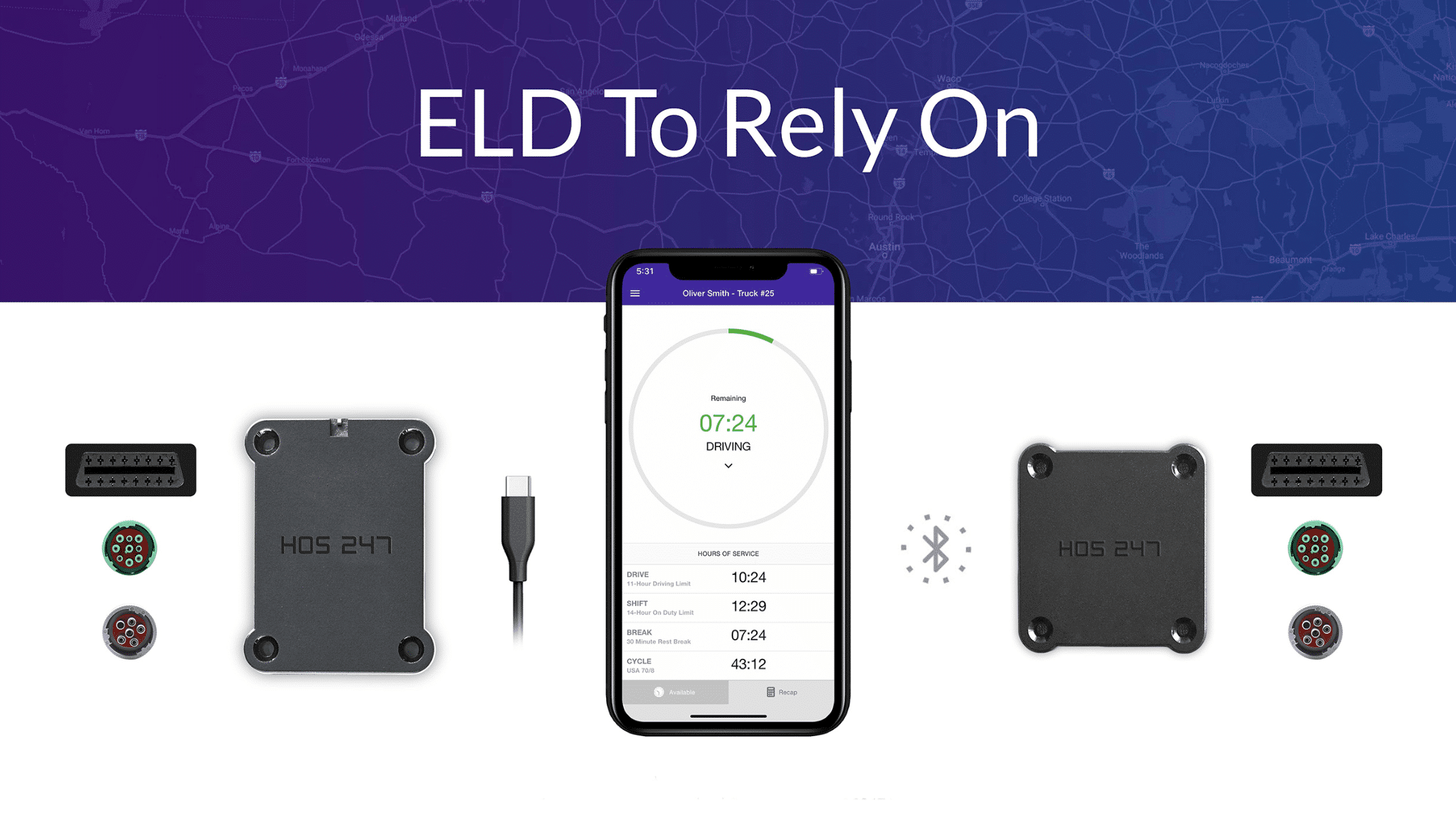
HOS247 is a leading ELD provider that meets all applicable HOS requirements. Our solution stands out from other CDL log books for its efficiency, reliability, and excellent customer support, which are the main reasons truckers choose HOS247 ELD. Some of the benefits provided by our solution include:
- Effective technical support. As user reviews on the Apple App Store and Google Play platforms show, our clients highly appreciate the HOS247 customer support for the efficiency and friendliness of our multilingual tech experts available from Monday to Sunday. In addition, our callback policy guarantees that if the call drops, your rep will contact you right away.
- Straightforward interface. Designed to be accessible and easy to use, the app can be paired with both iOS and Android operating systems to run smoothly on any phone or tablet. With the HOS247 app, drivers can easily update their driving status and create vehicle inspection reports, while fleet managers can access valuable metrics collected by the device through the web-based portal.
- Compatible hardware. If you own vehicles of different classes, you need a device that is compatible with all of them. The HOS247 hardware is compatible with most vehicles, and can be set up in minutes without requiring special installation.
- No-contract policy. With a flexible system of monthly or yearly subscriptions that can be easily upgraded or downgraded, our customers don’t have to worry about being locked into long-term contracts. Our clients stay because of the quality of our service; they do not have to commit for years in advance.
- Two-week trial. At HOS247, we encourage our customers to test our solution for 14 days before making a decision, so they can put the system to the test and decide if it suits their business needs.
- Extra features. The HOS247 ELD can be integrated with real-time GPS tracking, IFTA mileage, idle reporting, and vehicle diagnostics, allowing truckers to reduce operational costs and significantly boost the productivity of operations.
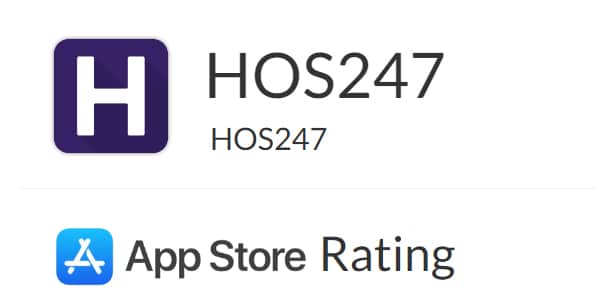
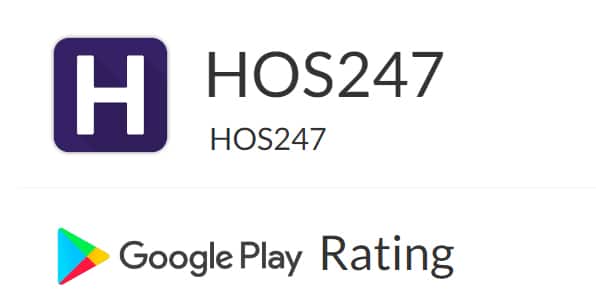
Improve Trucking Operations the HOS247 All-in-One Vehicle Fleet Management Solution
In addition to providing a reliable ELD solution to enhance your compliance efforts, HOS247 offers a comprehensive suite of all-in-one vehicle fleet management solutions. Our goal is to streamline your operations and foster a culture of safety within your fleet.
With HOS247, you can leverage advanced technology to gain real-time insights into your fleet’s performance, optimize routes, monitor driver behavior, and simplify compliance with industry regulations. Let’s explore the features that enable these capabilities:
- Real-time GPS tracking. This tool enhances vehicle and driver security, facilitates dispatch, improves customer service, and provides full fleet visibility. With GPS trackers that can be concealed inside the vehicle, motor carriers can also secure their assets and prevent vehicles from being utilized for unauthorized purposes.
- Vehicle maintenance. When maintenance is done on time, it can significantly cut repair expenses, extending vehicles’ lives. This feature tracks and schedules maintenance events based on mileage and hours of usage, keeping a record of past service history and malfunctions reported by drivers.
- Fault code detection. If the system finds a malfunction, it generates a specific trouble code corresponding to a fault detected in the vehicle and notifies the fleet manager. This tool also contributes to enhancing vehicles’ longevity to maximize carriers’ investments.
- IFTA mileage calculations. Automated IFTA mileage calculations eliminate audit risk and human error by tracking the distance traveled by a vehicle in each IFTA jurisdiction, making tax reporting easier.
- Idle reporting. Besides being harmful to the environment, idling may result in additional fuel expenses due to wastage. This feature helps fleet managers monitor and correct drivers’ behavioral patterns, reducing fuel consumption and cutting fuel costs.
How to Fill Out the Truck Drivers Log Book
There can be many circumstances where a commercial vehicle driver may need to fill in a logbook using paper logs. We’ve already discussed HOS exemptions allowing operators to fill their records manually. Device malfunctioning is another common reason drivers have to use analog logbooks. Completing the form is not complex but requires a lot of precision and attention to detail to stay in line with CDL logbook rules. Let’s take a closer look at the process.
The contents of a logbook include:
- The date
- Name of carrier
- Truck number
- The total number of miles driven within a 24-hour period
- The starting time of the 24-hour period
- The names of all co-drivers
- The shipping document that specifies the carrier and commodity being transported.
If the operator drives several vehicles of the fleet, this information should also be reflected in the logbook. The operator should state the origination point in the “from” line and write the destination in the “to” line.
Tracking Activities on the Graph Grid

The graph grid of a logbook is a crucial tool for tracking a driver’s activities during their working shift. It is divided into 24 boxes, with each box representing one hour of the day and marked with fifteen-minute intervals.
The grid has four sections that indicate the driver’s activities: off-duty, sleeping, driving, or on-duty and not driving. To record their duties, the operator must draw a straight horizontal line through the relevant activity, indicating the start and end time.
When the duty changes, drivers should indicate this by drawing a vertical line from the first mark of the previous duty to the next one. After each duty, truckers should leave comments in the remarks section, specifying information about the location, and the more precise the information is, the better. Once the CDL log book is completed, drivers must count the number of hours worked and double-check to ensure it equals 24. They should also correct any mathematical and grammatical errors and ensure that the recorded information is legible.
CDL driving regulations are extensive and can be challenging to adhere to. However, a dependable electronic logbook can go a long way in facilitating administrative tasks for both drivers and managers. HOS247’s reliable and user-friendly devices, combined with our comprehensive fleet management solutions, provide a seamless experience for managing your logs and maximizing operational efficiency. Order a demo today and try our devices for two weeks to see how easy keeping a CDL log book can be.
Tips and Best Practices for ELD Utilization
Effectively utilizing electronic logbooks is crucial for maximizing their benefits in fleet management. Here are some practical tips and best practices:
- Regular training. Conduct ongoing training sessions for drivers and management staff on how to use the electronic logbook. Ensure everyone understands the system’s functionalities, including logging hours, reporting, and HOS compliance.
- Stay updated on regulations. Keep abreast of the latest FMCSA regulations and updates. Ensure that your ELD solution is always compliant with current standards.
- Optimize for efficiency. Use elog data to analyze routes, driving patterns, and idle times. This information can help optimize routes, reduce fuel consumption, and increase overall efficiency.
- Proactive maintenance. A common feature of electronic logging devices is vehicle maintenance tracking. Monitor vehicle diagnostics and schedule preventive maintenance to reduce downtime and extend vehicle lifespan.
- Encourage compliance. Regularly review driver logs and address any discrepancies to ensure adherence to safety regulations.
- Leverage data for insights. Analyze ELD data for insights into fleet performance. Use this information to make informed decisions about operational improvements, driver training, and resource allocation.
- Incorporate feedback loop. Encourage feedback from drivers regarding the system and use it to make necessary adjustments for ease of use and effectiveness.
- Regular system checks. Periodically check the ELD system for any technical issues. Ensure that it is functioning correctly and reliably recording and transmitting data.
- Plan for connectivity issues. Have a contingency plan for areas with poor connectivity or device malfunctions. Ensure drivers are trained on how to record HOS manually if required and how to transfer this data to the ELD system later.
- Invest in reliable technology. Choose a reputable provider with a proven track record. The right technology partner can significantly streamline your fleet management processes.
By implementing these best practices, truckers can not only ensure compliance with regulations but also harness the full potential of their electronic logging devices to improve operational efficiency and safety.

ELDs and Eco-Friendly Fleet Operations
The integration of electronic logs in fleet management has not only streamlined operations but also contributed to environmental sustainability. By promoting reduced fuel wastage, ELDs can help reduce the environmental footprint of the transportation industry. Let’s explore how elogs aid in sustainable fleet management and discuss strategies to enhance eco-conscious operations:
- Reducing fuel consumption. GPS-integrated ELDs help in monitoring and optimizing routes, leading to reduced fuel consumption. Efficient routing minimizes unnecessary mileage, thereby decreasing fuel usage and emissions. This not only has a positive environmental impact but also leads to cost savings.
- Idle time monitoring. Many elog systems can effectively track vehicle idle times. Excessive idling not only wastes fuel but also contributes to air pollution. By identifying and reducing idle time, fleets can significantly lessen their environmental impact.
- Maintenance alerts for vehicle health. Regular maintenance is crucial for keeping vehicles in optimal condition. ELDs can provide alerts for scheduled maintenance, ensuring that vehicles operate efficiently with minimal emissions. Well-maintained vehicles are less likely to contribute to air pollution.
- Data-driven decisions for sustainability. The data collected by ELDs can be analyzed to make informed decisions that promote sustainability. This includes identifying trends in fuel usage, driver behavior, and vehicle performance, allowing for targeted actions to reduce environmental impact.
- Promoting eco-driving practices. ELDs can monitor driving patterns such as speeding, harsh braking, and rapid acceleration, all of which can increase fuel consumption. By identifying these behaviors, fleet managers can train drivers in eco-driving techniques that reduce fuel usage and emissions.
- Compliance with environmental regulations. Electronic logbooks improve compliance with HOS regulations, which indirectly aids in environmental conservation. Well-rested drivers are more likely to drive efficiently, contributing to lower emissions.
- Encouraging the use of alternative fuels. Fleets can use ELD data to evaluate the feasibility of transitioning to alternative fuel vehicles. By monitoring fuel efficiency and usage patterns, they can strategically plan the incorporation of eco-friendly vehicles into their fleet.
- Long-term sustainability planning. The insights gained from ELD data can inform long-term sustainability strategies. Fleets can set measurable goals for reducing their carbon footprint and monitor progress over time.
Incorporating ELDs into fleet management is not just a compliance necessity but a step towards environmental stewardship. By leveraging the capabilities of these devices, fleets can significantly contribute to sustainability efforts, reducing their ecological impact while optimizing operational efficiency.
FAQs and Common Queries: Understanding ELDs and Fleet Management

Here’s a comprehensive FAQ section that addresses some of the most common questions and concerns regarding electronic logging devices and fleet management.
Who needs to use an ELD?
Most commercial motor vehicle (CMV) drivers who are required to keep records of duty status (RODS) need to use ELDs. This includes long-haul and short-haul truck drivers, bus drivers, and those transporting hazardous materials.
Are there exemptions to the ELD mandate?
Yes, exemptions include drivers of vehicles manufactured before 2000, certain short-haul drivers, and those engaged in drive-away/tow-away operations where the vehicle is the commodity.
How do electronic logbooks impact driver privacy?
ELDs are designed to record vehicle movement and driver activity. Driver privacy is protected as the devices only record information related to HOS and do not track personal activities or movements during off-duty hours.
Can ELD data be used for purposes other than compliance?
Yes, ELD data can be used for optimizing routes, monitoring fuel consumption, scheduling maintenance, and improving overall fleet management efficiency.
How does an ELD work in areas with poor connectivity?
ELDs store data locally and then transmit it when the vehicle is back in an area with connectivity. Drivers should also be trained in recording HOS manually in case of connectivity issues.
What should I look for in an ELD provider?
Look for providers that offer reliable and FMCSA-approved elog solutions, user-friendly interfaces, robust customer support, flexible contract terms, and additional features like GPS tracking and IFTA reporting.
Are there penalties for not complying with the ELD mandate?
Yes, non-compliance can result in fines, lowered CSA scores, and impacts on a driver’s or company’s ability to operate.
How often do ELDs need to be updated?
The frequency of updates can vary. It’s important to follow the manufacturer’s guidelines and ensure the ELD is running the latest software version for optimal performance and compliance.
What should I do if my ELD malfunctions?
If an ELD malfunctions, drivers are typically required to notify their carrier immediately and revert to paper logs until the device is fixed.
Can ELD data be integrated with other fleet management systems?
Many ELDs offer integration capabilities with other fleet management software, enhancing data analysis and operational oversight.

As an expert in B2B and B2C sales, I’ve dedicated myself to perfecting sales processes and client retention strategies in the logistics and trucking industry. I have significantly contributed to the expansion of the ELD service, catering to retail and wholesale clients in need of HOS247 ELD solutions. My unwavering commitment to implementing state-of-the-art sales techniques and technologies ensures the continuous growth and success of businesses I work with.


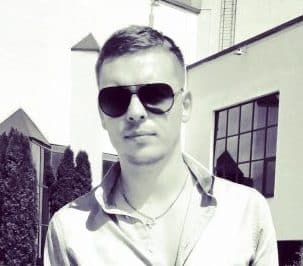









Electronic logging devices (ELDs) are now a standard requirement in the trucking industry, and their importance continues to grow in 2025. As truckers face stricter compliance demands and increasing operational challenges, having a reliable driving log app becomes essential. The
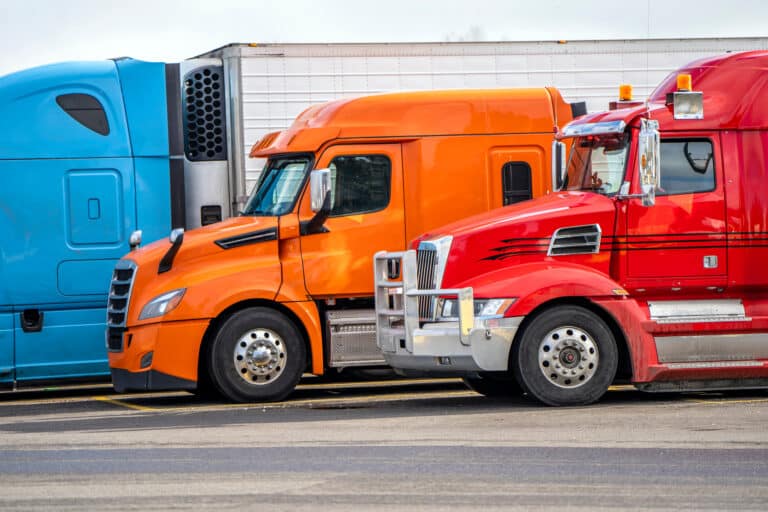
Fleet asset tracking gives carriers an opportunity to improve operations by providing full fleet visibility, reducing operating costs, and increasing productivity. These systems monitor, track, and analyze vehicle data, such as location, diagnostics, routing, fuel consumption, and driver performance, to

Transportation professionals experience clear financial benefits by integrating GPS tracking for commercial vehicles into their fleet. Truckers can substantially improve management capabilities of the entire fleet, as well as reduce costs and boost productivity. In this article we will look